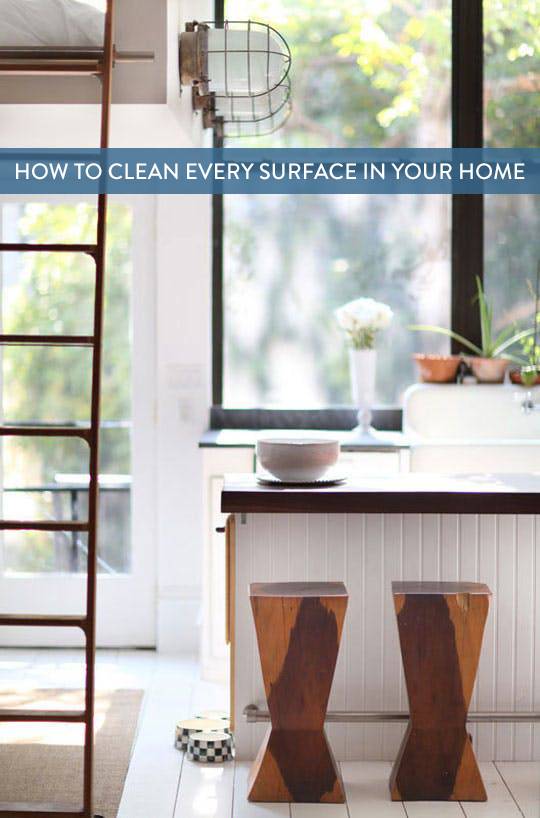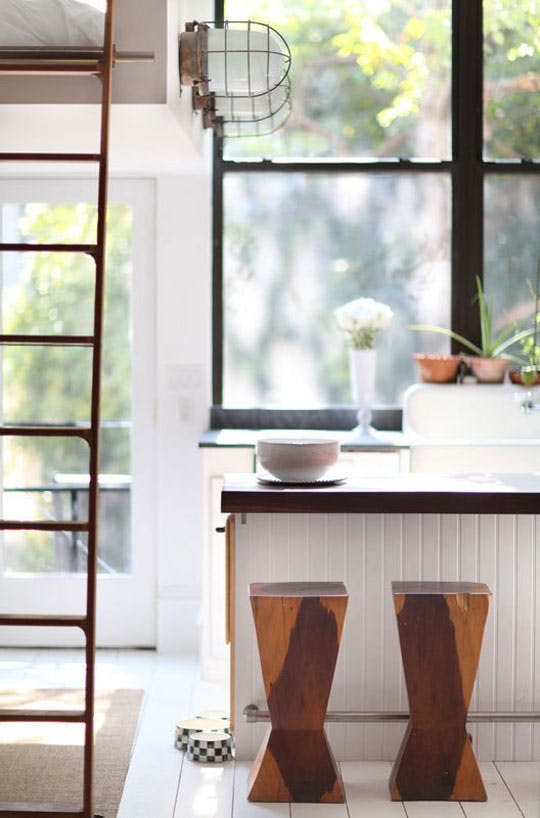It’s that time of year… spring is just around the corner, and the house is in dire need of a deep clean. Today we’re sharing an overview of how to clean the most common household surfaces, from granite to copper to concrete. Read on to check out our tips.
Free cheat sheet:
Sign up for our free, weekly newsletter (you can always unsubscribe, we won’t spam you, and you’ll get a link to the download after you sign up).
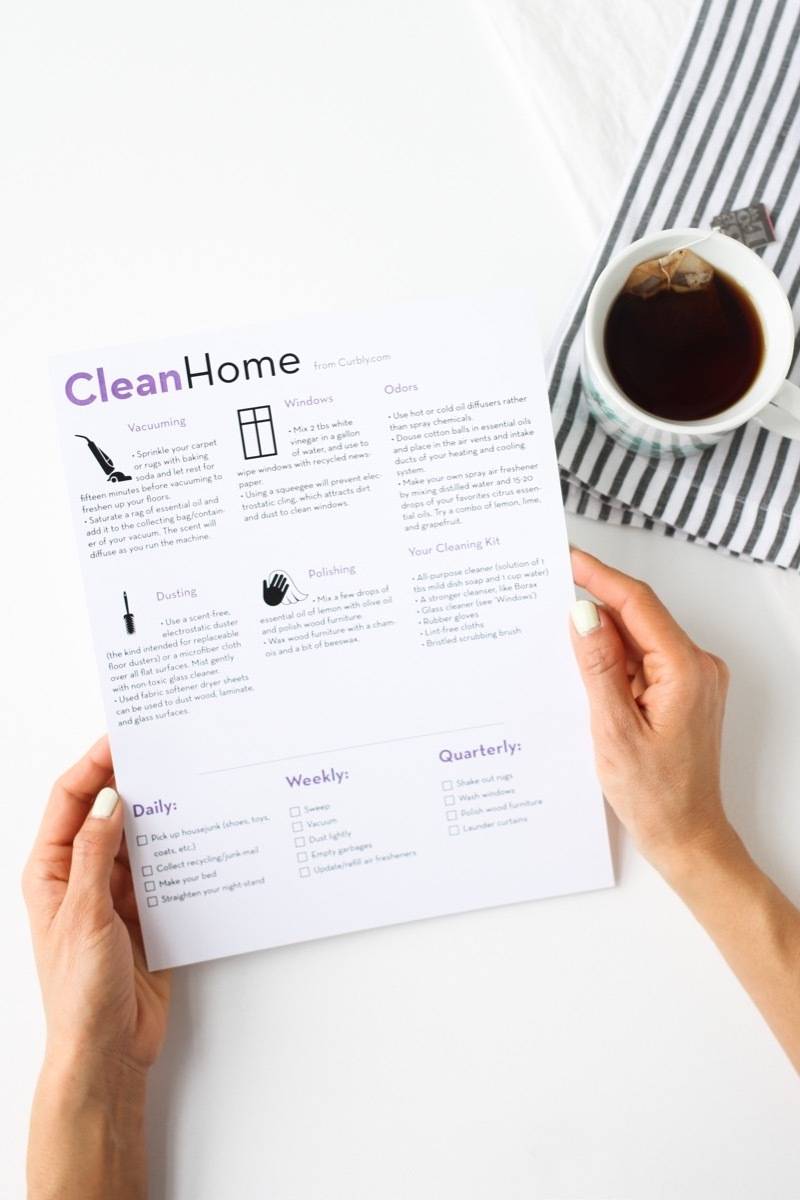
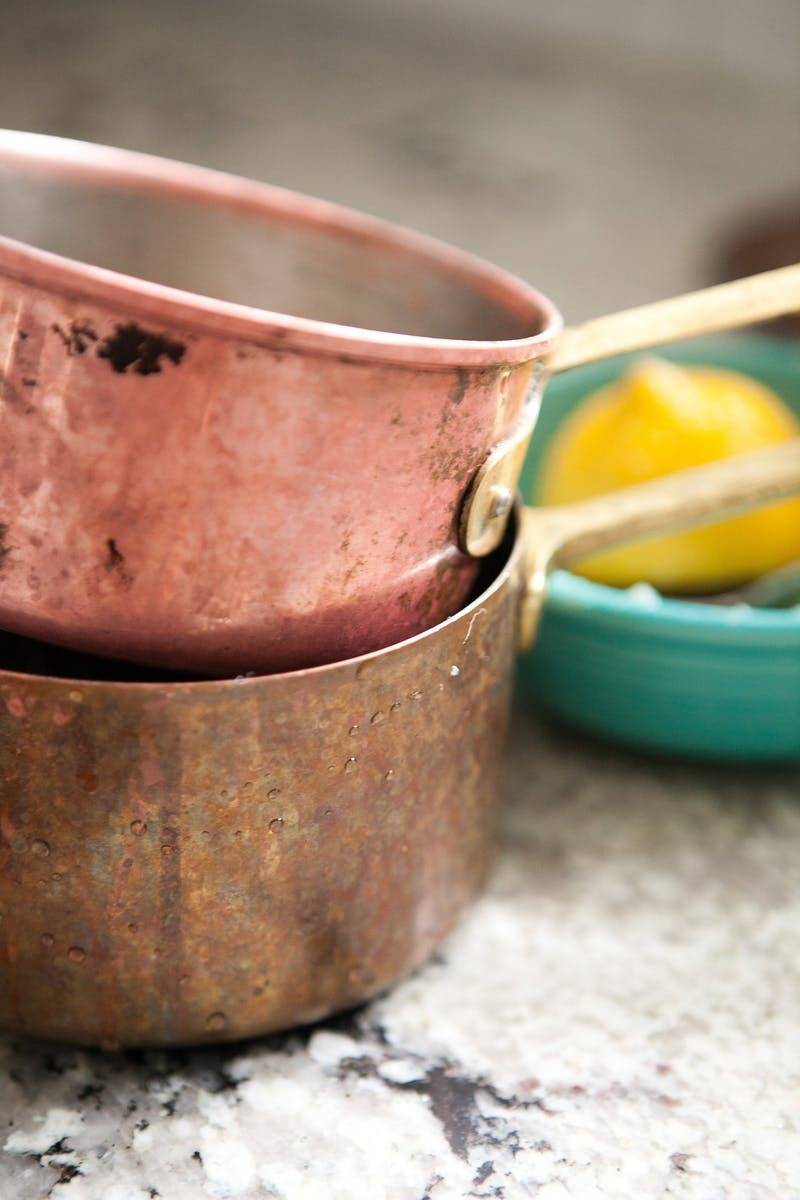
1. Copper -Salt and lemon are the key to cleaning copper. Simply pour salt on the flesh of a halved lemon and then rub the copper until the residue is removed. Read more over at The Kitchn.
2. Brass – To get brass looking new, dip a microfiber cloth in soapy water, wring it out and wipe down your brass surfaces. If the brass needs a deeper cleaning, try an acidic tomato-based product like ketchup or tomato paste. Let it sit for an hour, and then wipe it clean.
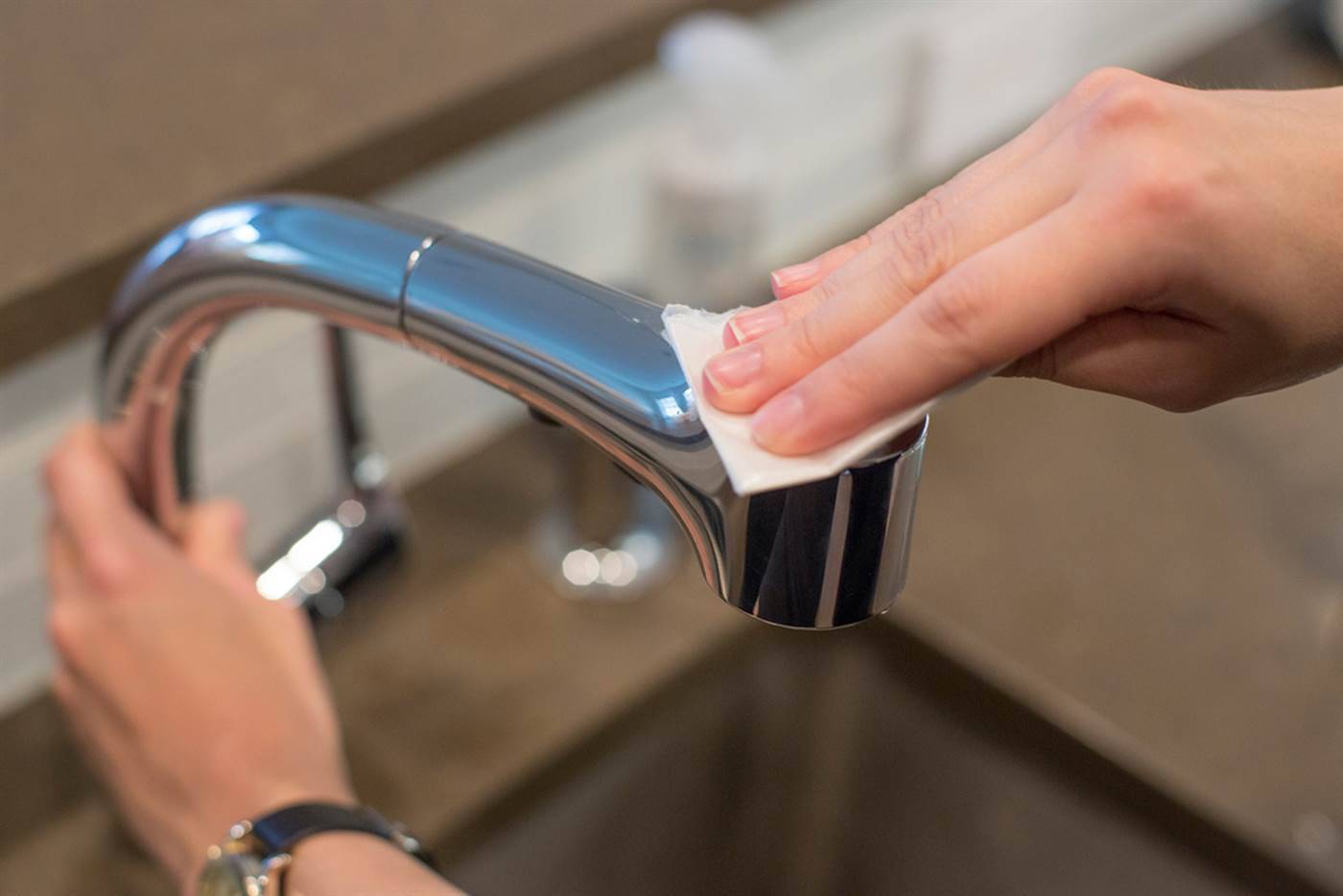
3. Chrome – You can clean chrome fixtures by mixing a small amount of mild detergent with water. You may also want to purchase a cleaner designed specifically for chrome, which will also help polish it back to its original shine. Read more tips at Today.com.
4. Tile – Sweep or dust the tile frequently, and wash using a rag dipped in mild detergent. Avoid sponges, as they tend to just move the dirt into the grout. You can also check out my in-depth article on how to clean tile grout.
5. Hardwood Floors – Spray a cleaner designed specifically for the finish of your hardwood floor onto a Swiffer style sweeper and gently rub the surface clean. When in doubt, simply use water with a bit of white vinegar mixed in. Always avoid leaving any standing water on the floor.
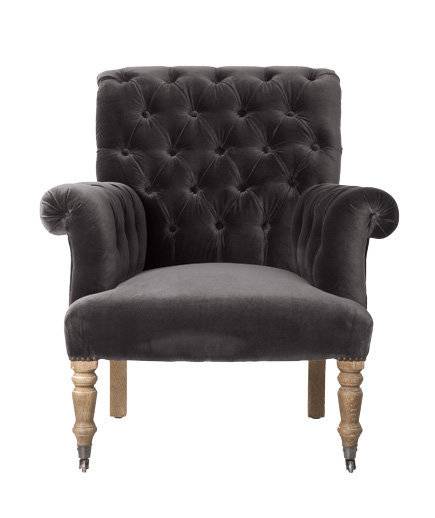
6. Upholstery – Maintenance is the key to keeping upholstery clean. Be sure to vacuum your sofas and chairs periodically using the upholstery attachment. Then use Capture Soil-Release Pre-Mist to remove stains from any linen, cotton, jacquard, or polyester-acrylic blend fabrics. To clean the whole surface, simply dip a soft-bristled upholstery brush in soapy water and lightly scrub the fabric. Read more over at Real Simple, or check out our article on how to clean vinyl upholstery (it’s not hard!).
7. Wood Furniture – Use dishwashing detergent to clean your wood furniture. Mix a small amount of detergent with water and dampen a sponge to wash the entire surface. Q-tips and cotton balls work well for small nooks and crannies. Be sure not to soak the furniture, as this can cause damage.
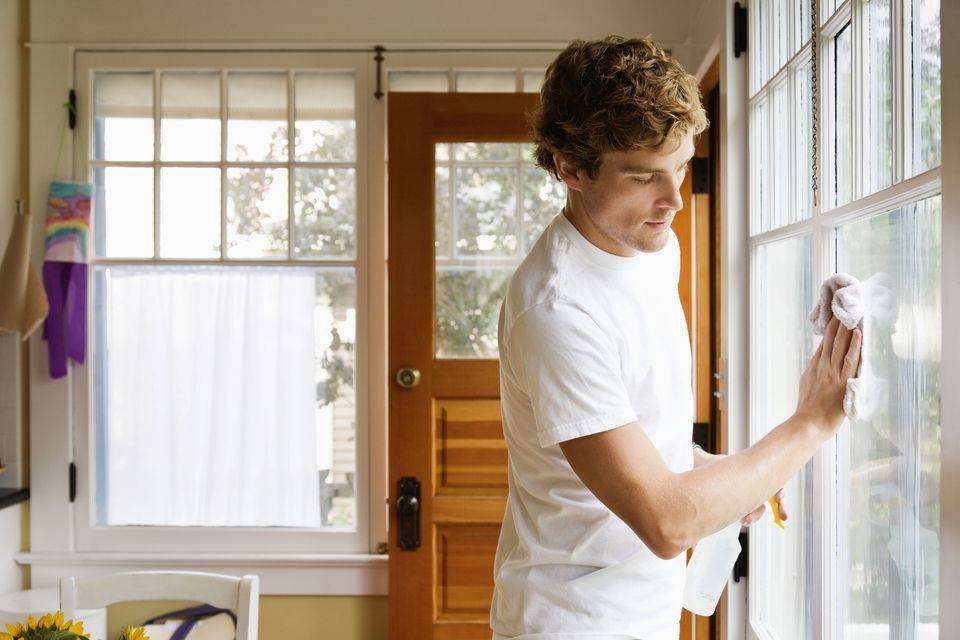
8. Glass – Spray glass cleaner on the surface of your window and wipe it away with a squeegee. Avoid paper towels, as they will leave lint and streaks. If you have Low E coating on your windows, be sure to avoid any strong ammonia or alcohol-based cleaners and stick to lighter mixtures like vinegar and water. Check out more tips at The Spruce.
9. Granite – The first key to maintaining a granite countertop is to make sure that you seal it properly. Once it is sealed, it will be relatively impervious to bacteria. For daily cleaning, wipe with soapy water. To disinfect, use a 50/50 mix of water and 91% isopropyl alcohol. Let it sit for 5 minutes, then wipe clean with a towel. Avoid harsh cleaners like ammonia or bleach.
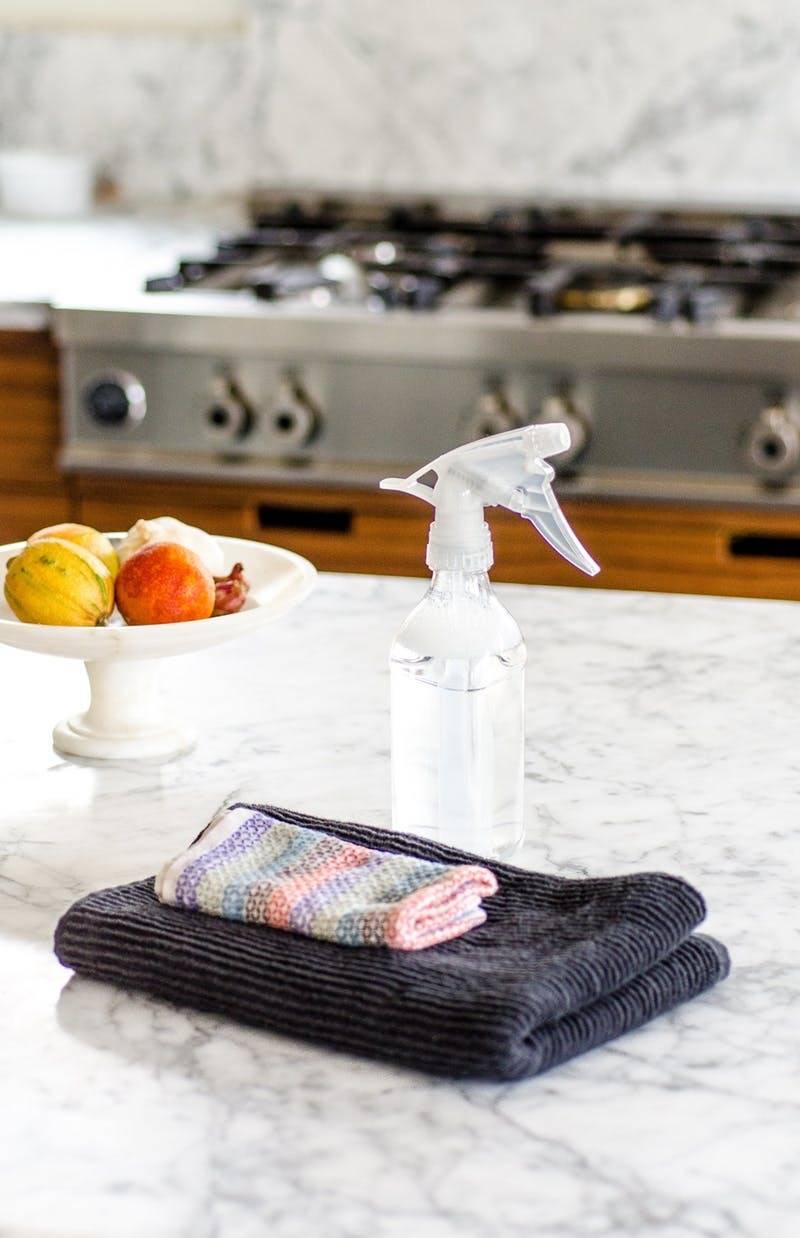
10. Marble – For marble surfaces, you need to avoid acidic substances like lemon juice or vinegar. Instead, mix mild dish soap with water and use a spray bottle to coat the surface. Wipe it off with a hot, wet dish cloth. Dry with a dish towel. Read more at The Kitchn.
11. Quartz – Quartz is a forgiving material, but be sure to clean up spills before they have a chance to dry. Wipe the surface regularly with a mild detergent mixed with water, and avoid anything abrasive or super acidic or alkaline.
12. Concrete – As with many other surfaces we’ve mentioned, soapy water is again the safest way to clean concrete countertops and floors. You may also want to purchase a pH balanced cleaner designed specifically for concrete.
13. Stainless Steel – Use a spray bottle filled with vinegar to wipe down the appliance (your fridge, your stainless steel dishwasher, inside and out). Then, apply a (very small) amount of mineral oil, rubbing it in the direction of the grain. Don’t use too much!
